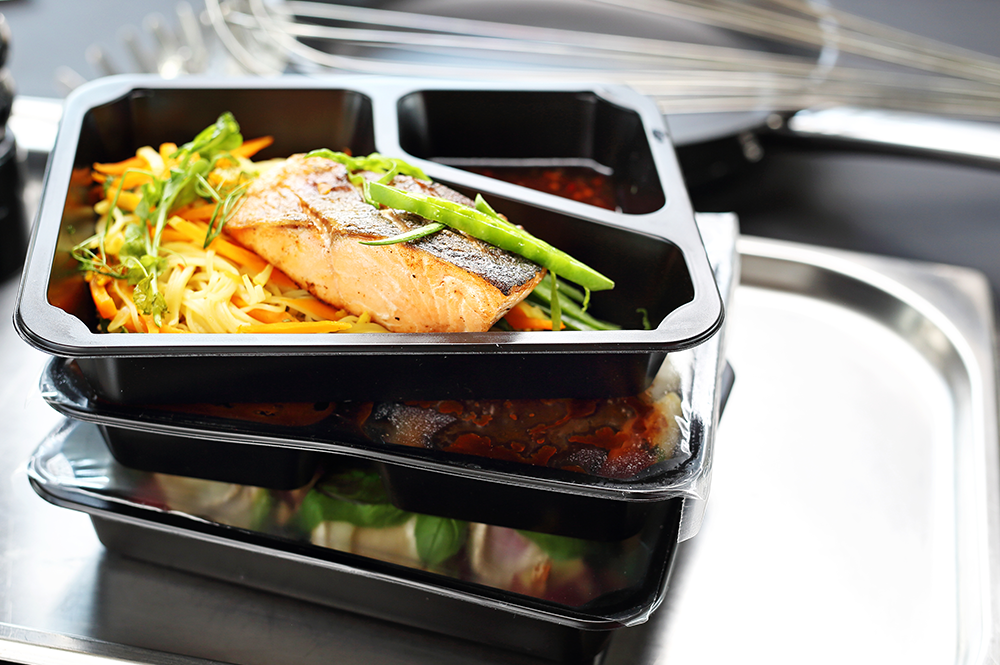Food industry trends have recently turned their research focus onto on-the-go meals and meal kits to help consumers buy back time along with their convenience foods purchases.
Consumers increasingly turn to convenience foods to reclaim precious time in their hectic schedules. As our lives become busier, the appeal of quick, easy, and ready-to-eat options is only gaining momentum, reshaping the food industry and our dining habits. Additionally, many have raised their expectations for sustainable food options containing fresh ingredients and a global range of options.
Let’s look at the evolution of popular demand for convenience foods alongside technological advancements and how consumers gravitate towards easy, readymade meal options that would help them carve more time for their priorities while aligning with their value-based expectations.
The Evolution of Convenience Foods
Technological advancements have brought us a long way from the caveman’s time when they had to cultivate, harvest, and cook their food. Every new invention for cooking convenience and progressive change in professional careers have shaped how we view our easy meal preparation. Let’s look at how convenience foods have evolved since the 20th century.

- Canned Food
Although the concept of food sealed in tin cans was invented a century earlier by Englishman Peter Durand, canned food’s global popularity and exposure grew during World Wars 1 and 2 because soldiers were provided with familiar meals overseas. Their extended shelf life made them a reliable source of nutrition. This convenient method of storing food caused it to be adopted and supplied to shelves worldwide.
- 1950s TV Dinners
The advent of television in the 1950s in the US shifted meal times from the dinner table to the living room. Scheduled broadcasting ensured that popular TV shows were screened at specific time slots, and spending hours in the kitchen would mean families would miss out on their favourite form of entertainment. Swansons saw an opportunity to create something new and released the first-ever TV dinner in 1953. This was an aluminium tray with compartments for meat, vegetables, and food that could be heated in an oven in under 5 minutes. They sold just 10 million trays in the first year of production and are still one of the big names in convenience foods seven decades later.
- 1970s Microwave Meals
With the introduction of the microwave, microwave meals, an offshoot of TV dinners, were the next big convenience food to hit the market. These frozen meals were easy to store in the freezer and prepared in under three minutes. Unlike the TV dinners, these meals were meant for social gatherings hosted by working women who wanted to serve a full-course meal without extensive meal preparation.
- 2000s E-commerce Stores
E-commerce stores began to grow in popularity, and the spread of internet usage changed how manufacturers conceived convenience foods. In a 2001 survey by AgEcon, 26% of respondents purchased 4.4 speciality food or drinks online. Manufacturers worked on concepts and improved convenience foods with packaged mixes that enabled consumers to create meals with longer shelf lives and short preparation times. Packaged mixes soon became part of everyday cooking, whether cake mix or macaroni and cheese.
Why Convenience Foods Are in High Demand
The consumer’s outlook on managing home life, work, and recreation has been evolving. The traditional 9-to-5 workday is becoming less common, and cooking from scratch doesn’t seem practical. Considering the time spent on family responsibilities, household chores, and commuting to work, it becomes evident why quick meal solutions have gained popularity.
However, despite the time constraints, people generally consider home cooking to be simple, efficient, and healthy. A report from Innova Market Insights shows that 43% of the respondents have cooked meals at home more than in the past year. The desire for home cooking is one of many reasons for the rising growth in convenience foods.
Let’s look at a few other factors that have influenced this rising trend for instant food options:

- Health & Nutrition: In the past few decades, convenience food has had a bad rap for containing higher preservatives and other harmful chemicals. Interestingly, this growing interest in well-being and health on the part of consumers has led to the industry innovating healthier convenience foods that are organic and nutrient-dense meals. A market study conducted by Mintel revealed that over a third of instant noodles/pasta, consumers would pay more for the ‘no maida’ label because of growing awareness of its ill effects. It also observed that manufacturers were looking for tasty maida substitutes such as whole wheat (57%), oats (47%), rice or soya (45% respectively) to subsequently bridge the maida gap without compromising on taste.
- Changing Meal Patterns: Traditional meal patterns are changing. The concept of three structured meals has evolved to more flexible eating habits, including snacking and smaller, more frequent meals. Convenience foods fit perfectly as fast food alternatives to these daily patterns, offering quick, portable options that can be eaten anywhere.
- Economic Uncertainty: Inflation and recessions are growing factors driving demand for convenience foods. More hours at work means less time for cooking proper meals. Healthy convenience foods provide quick, affordable meals that fit stretched budgets.
- Globalisation of Meals: Due to social media influence, many people are looking at new types of cuisines. As a result, there is an increased demand for easily accessible pre-packaged meals from around the world.
The Future of Ready-Made Foods
Besides the ease of using online food delivery services, convenience foods like finger foods, ready-made meals and nutrient-dense snacks are rapidly growing in popularity because of their many benefits, such as multiple cuisines, no-hassle cooking, and enormous savings in time and energy. The scope for growth in this market is immense as it has steadily demonstrated growth over decades. The global convenience food market reached $574.87 billion in 2023. A report by Stellar Market Research projects that it is expected to reach $860.98 billion in 2030; the lion’s share is projected to be online purchases. The F&B industry will continue to innovate and evolve with shifting technology, health & wellness, and sustainability.
Symega is looking to partner with like-minded manufacturers who will forge pathways in convenience food history.
For more information, contact us at marketing@symega.com.



